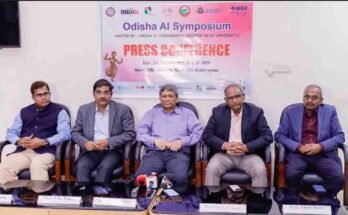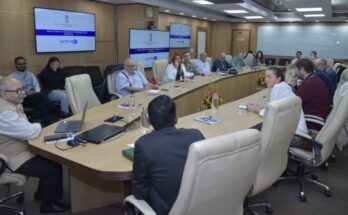Washington: As a NASA spacecraft gets ready for the historic moment to grab a sample from asteroid Bennu’s surface on October 20, scientists on the mission are hopeful that hydrated minerals and organic material will likely be present in the collected sample, finally revealing some signs of life in the alien world.
In a special collection of six papers published in the journals Science and Science Advances, scientists present new findings on asteroid Bennu’s surface material, geological characteristics and dynamic history.
They suspect that the delivered sample of Bennu may be unlike anything we have in the meteorite collection on Earth, NASA said in a statement.
OSIRIS-REx will depart Bennu in 2021 and deliver the sample to Earth on September 24, 2023.
One of the papers, led by Amy Simon from NASA’s Goddard Space Flight Center in Greenbelt, Maryland, shows that carbon-bearing, organic material is widespread on the asteroid’s surface.
These materials are present at the mission’s primary sample site, Nightingale, where OSIRIS-REx will make its first sample collection attempt on October 20.
This organic matter may contain carbon in a form often found in biology or in compounds associated with biology.
“The abundance of carbon-bearing material is a major scientific triumph for the mission. We are now optimistic that we will collect and return a sample with organic material — a central goal of the OSIRIS-REx mission,” said Dante Lauretta, OSIRIS-REx principal investigator at the University of Arizona in Tucson in the US.
Scientists are planning detailed experiments on these organic molecules and expect that the returned sample will help answer complex questions about the origins of water and life on Earth.
The authors have determined that carbonate minerals make up some of the asteroid’s geological features.
Carbonate minerals often precipitate from hydrothermal systems that contain both water and carbon dioxide.
The findings have allowed scientists to theorise that Bennu’s parent asteroid likely had an extensive hydrothermal system, where water interacted with and altered the rock on Bennu’s parent body.
Scientists made another striking discovery at site Nightingale: its regolith has only recently been exposed to the harsh space environment, meaning that the mission will collect and return some of the most pristine material on the asteroid.
The findings are a major milestone in an ongoing debate in the planetary science community – how primitive asteroids like Bennu change spectrally as they are exposed to “space weathering” processes, such as bombardment by cosmic rays and solar wind.
“The mission is less than two weeks away from fulfilling its biggest goal – collecting a piece of a pristine, hydrated, carbon-rich asteroid,” NASA said.




